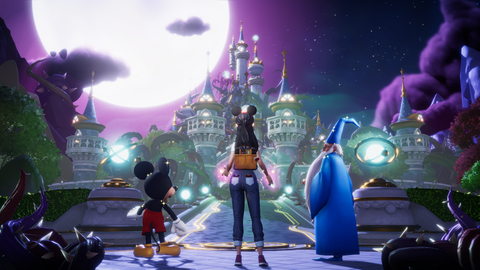NASA Highlights Science, New Airlock on Next Space Station Resupply Mission

NASA will host a media teleconference at 1 p.m. EST Friday, Nov. 20, to discuss science investigations and a new privately funded airlock launching on SpaceX’s 21st commercial cargo resupply mission for the agency to the International Space Station. It is SpaceX’s first launch on its second Commercial Resupply Services contract with NASA and the company will use the upgraded version of the cargo Dragon spacecraft.
Audio of the teleconference will stream live online at:
SpaceX is targeting 12:50 p.m. Wednesday, Dec. 2, for the launch of the Dragon on a Falcon 9 rocket from Launch Complex 39A at NASA’s Kennedy Space Center in Florida.
To participate in the teleconference, media must contact Stephanie Schierholz at 202-358-4997 or stephanie.schierholz@nasa.gov by 11 a.m. Friday, Nov. 20, for dial-in information.
David Brady, associate program scientist for the International Space Station Program at NASA’s Johnson Space Center in Houston, will provide an introduction to the research and technology aboard the Dragon spacecraft.
Also participating in the briefing are:
- Charles Cockell, professor of astrobiology at the University of Edinburgh and principal investigator for the BioAsteroid experiment, and Rosa Santomartino, postdoctoral research associate. BioAsteroid aims to better understand how microbes interact with and change asteroids, information that could be used for future mining on asteroids.
- Joseph Wu, professor and director of the Stanford Cardiovascular Institute and principal investigator, and Dilip Thomas, postdoctoral research fellow for Cardinal Heart, which studies the effects of microgravity on heart tissue using tissue chips, in an effort to develop therapies on Earth and countermeasures for future space exploration.
- Benjamin Easter, deputy element scientist for exploration medical capability in the NASA Human Research Program, who will discuss HemoCue, a commercial off-the-shelf device that will be tested as a tool to provide autonomous blood analysis as an important step toward meeting the heath care needs of crew members on future missions, including for NASA’s Artemis program to the Moon.
- Brock Howe, program manager for the Nanoracks Bishop Airlock, the first privately funded module to be delivered to the space station. The Bishop Airlock will support science experiments, satellite deployment, and spacewalks.
- Dusan Sekulic, professor of mechanical engineering at the University of Kentucky and principal investigator, and Sinisa Mesarovic, professor of mechanical and materials engineering at Washington State University, for SUBSA-BRAINS. This experiment looks at how liquid metals behave in microgravity as a first step toward developing techniques that could be used for construction of human space habitats, as well as to repair damage from micrometeoroids or space debris.
- Pinar Mesci, project scientist for Space Tango-Human Brain Organoids, an experiment that studies how microgravity affects small, living masses of cells as a way to understand the effects of spaceflight on the brain. This investigation could pave the way for additional exploration of changes to neurons during spaceflight, including studies of pharmacology, disease, aging, and more.
Cargo resupply from U.S. companies ensures a national capability to deliver critical science research to the space station, significantly increasing NASA’s ability to conduct new investigations at the only laboratory in space. The upgraded Dragon spacecraft has double the capacity for powered lockers that preserve science and research samples during transport to or from Earth.
The cargo Dragon will be the second SpaceX spacecraft parked at the orbiting laboratory, following the arrival Nov. 16 of the Crew Dragon that carried four new Expedition 64 astronauts, who will support these and other investigations as part of their six-month science mission.
The space station is a convergence of science, technology, and human innovation that demonstrates new technologies and enables research not possible on Earth. NASA recently celebrated 20 years of continuous human presence aboard the orbiting laboratory, which has hosted 242 people and a variety of international and commercial spacecraft. The space station remains the springboard to NASA’s next great leap in exploration, including future human missions to the Moon and eventually to Mars.
For launch countdown coverage, NASA’s launch blog, and more information about the mission, visit:





